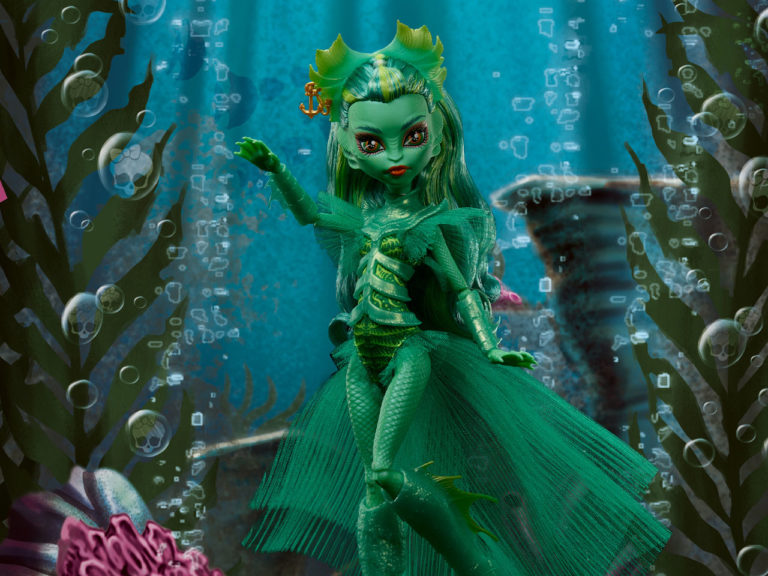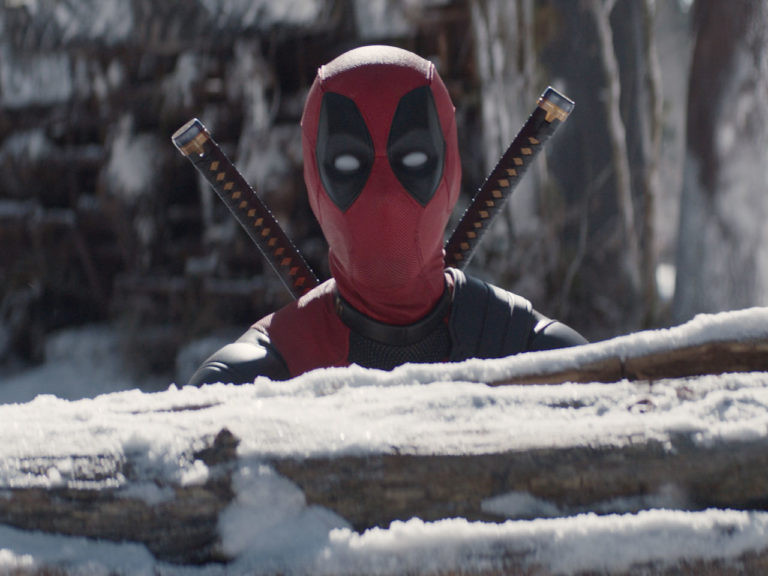
Never did I think that a Sixties Batman-inspired cartoon would nearly bring me to tears, but here we are.
Last year’s Batman: Return of the Caped Crusaders was a runaway success. It was more Batman, which is always welcome, and proof that even the silliness of the Sixties television series has a place in the modern era. Hearing Adam West, Burt Ward, and Julie Newmar reprise their iconic roles was a treat, and almost enough to sell the movie on its own. It was more than just a quick cash-grab that traded on nostalgia, though, as the movie was a fitting continuation of the show and a celebration of all things Batman. There were countless gags and references to different iterations of the Dark Knight Detective, along with an entertaining story to boot. The fact that it was well-received wasn’t a huge surprise, and even less so that it was successful enough to spawn a follow-up.
If you’re like me, just about anything Batman ’66 is right up your alley. Heck, I would have taken a collection of shorts if it got me more West, Ward, and Newmar.
But no, they weren’t content to do just anything with their sequel. More Sixties Batman needed something bigger and grander, something…
Shatner.
As if another Sixties Batman movie wasn’t great enough, having one of the most iconic actors of all time voice one of Batman’s greatest villains (and one who was never featured in the TV series) would be a big enough selling point on its own. Having a movie with both West and Shatner, both of whom have built careers around their straightfaced, deadpan delivery, is a historic enough pairing. From a novelty standpoint, having two icons of pop culture unite is reason enough to check the movie out.
But is it any good? Read on, enemies of crime and crusaders against crime throughout the world, and find out.
I liked Return of the Caped Crusaders quite a bit. I almost loved it, in fact. Hearing the iconic voices of West, Ward, and Newmar in a return to the world of Batman ’66 made up for some shortcomings with the plot and a few misguided attempts at “edgier” jokes. It’s not a move I would rank at the top of the greatest Batman films ever made, but it’s plenty enjoyable and one I have no qualms about revisiting. Batman vs. Two-Face is just as good, if not even a bit better, though it has a few issues of its own.
From a plotting standpoint, Batman vs. Two-Face is more in line with the television series than its predecessor, and it doesn’t have anything to do with the nonetheless excellent The Lost Episode comic issue. Instead of a consistent narrative arc, this movie is almost like a few loosely connected episodes played together. This is by no means a bad thing, as that’s how the show was broadcast: the first two seasons were made up of two- and three-part adventures that would oftentimes shift directions just as many times. Return, on the other hand, had a pretty consistent plot that ran through the whole movie. To that end, the previous film is paced a little better, but this one feels more like the show it’s meant to be a continuation of.
It has its own tone too, which is refreshing. It still plays up the camp aspects inherent in this version of Batman, but with a far straighter face. Return practically turned to the camera and winked every time there was a joke, and while it was funny, it wasn’t deadpan and played straight like the show. I’d hesitate to say this is a darker movie, as that term carries connotations that shouldn’t be associated with this version of Batman, but it is more… dramatic, let’s say.
That drama starts right from the beginning, too, when we’re treated to their take on the origin of Two-Face. Harvey Dent is Gotham’s District Attorney, as he’s known to be, and the movie opens with him joining the Caped Crusaders in viewing a new prison experiment. It seems that one Doctor Hugo Strange has developed a device that will extract all evil from a person. To demonstrate, he and his assistant, Doctor Quinzel (who doesn’t have a very large role, sad to say) parade in some of Arkham’s most fiendish criminals: Joker, Riddler, Penguin, Egghead, and Mr. Freeze. The extraction device works too well, it seems, resulting in an explosion that scars poor Dent.
Bear in mind that this is all in the first five minutes of the movie. Two-Face’s life of crime is portrayed in a montage under the opening credits, a brilliant scene that is reminiscent of the opening of Batman: The Movie. The Dynamic Duo apprehend him before the credits are done rolling, and once the film starts again he is already on the road to recovery. After a successful round of plastic surgery, Dent is welcomed back to public service as he is made assistant… to the assistant D.A.
While the broad strokes are fairly easy to figure out, some of the finer details of the story were a genuine surprise. Two-Face’s presence is felt throughout, but there are long stretches where even Dent isn’t a part of the action. Instead, the movie turns its focus on two of the most popular original villains from the television series: King Tut and Bookworm. Both villains have their own separate schemes that still manage to revolve around the number two, which ties back to Two-Face’s overall involvement (however loosely). I particularly loved the scene with Tut, which culminates in an interrogation that is as hysterical as it is ridiculous. Wally Wingert does a passable enough impression of Victor Buono, though his Riddler is much better, but it’s still one of the stronger sequences of the movie.
The overall plot does meander in the middle, and I didn’t think the climax was quite as impactful as it could have been, but in general it’s more consistent than its predecessor. The animation is maybe a hair better too, with some great set-pieces and fights. I loved the fight aboard a double-decker bus in particular, starting with a clever heist and resulting in a fight that had some actual gymnastics from the Boy Wonder. There’s a death trap on a giant pool table too, which is just as great as you’d expect. Playing with the physics and rules of pool on that scale is fun enough, and of course there’s a groan-worthy pun or three. The writers and animators sure make use of the medium, putting the Dynamic Duo in environments that would have been impossible on the budget of a Sixties TV show.

The jokes land much better this time around, too. They aren’t quite as rapid fire as before, but the humor is much more in line with the tone of the show. Even a gag early on, where Batman and Catwoman have a date at Arkham, is much more dry and understated than it could have been, resulting in an even bigger laugh.
I will say that it’s a shame that some of the cameos aren’t really followed up on. Harley Quinn never gets a mention after the first scene (though there is an Easter egg on the Blu-Ray that hints at what could have been), Hugo Strange’s involvement is a tad weak, and Bookworm could have been given a little more to do. Strange actually has the most screentime of the three, yet he didn’t leave as much of an impression as he should have. Bookworm was great to see, there’s no doubt about it, but having his relatively low-key scene follow the uproarious Tut interrogation left him fighting an uphill battle. Still, any chance to see how Batman ’66 would have handled characters who weren’t on the show is always welcome.

Now, you want to know about Shatner. I know. When he was announced as Two-Face, I was delighted, for the chance to hear him and West out-deadpan each other was something I didn’t want to miss. I was pleasantly surprised, then, at how good his performance was here. Like, it is an actual performance, not just endless mugging or playing up a persona. His Harvey Dent is understated, only occasionally breaking out in a Shatnerian pause, and he effectively conveys the inner turmoil Harvey feels. The moment he finds out he’ll have to earn back his place as the city’s District Attorney is full of disappointment, yet he still carries himself with a touch of nobility and optimism that he can earn back the right to the citizens’ trust. His Two-Face is as menacing as his Dent is sympathetic, affecting a gravelly rasp that is menacing without being comical. Truly, I was shocked at how great Shatner played off the rest of the cast, as his chemistry with West and Ward in particular was so natural you’d think he’d been part of the cast in the show’s run.
Everybody else is great, too. In the previous movie, Ward was the performer who sounded most like his younger self, and while hearing West and Newmar again was great, their age was evident in their performances. Everyone is full of life and vigor this go around, though, and even Thomas Lennon’s Chief O’Hara is much, much better. Villains like Joker, Penguin, and the like still don’t sound as close to the original actors as you’d want, but they have less screen time this time around so it’s less distracting. Even so, they’re fine enough performances given the necessity of recasting the roles.
Lee Meriwether (Catwoman from Batman: The Movie, and my personal favorite of the Newmar/Meriwether/Kitt Catwoman Trifecta) pops in as well, voicing a new character named Lucilee Diamond. At first, casting the one-time Feline Fatale in such an obscure role was a bit strange, but fear not, as it culminates in one of the best gags in the movie.
The score from Dynamic Music Partners is full of energy, evoking the feel of the show while putting some new spins on classic themes. While there aren’t any pieces that really stuck out to me, the score fit well with the movie. Nothing stuck out as out of place or downright bad, and it certainly kept the momentum orb the film going.
As a whole, this movie is great fun. It has more of a story than I’d expected, and the episodic nature of it made it feel like a three-parter from the show. If I had to compare the two, I’d say I like this one a hair more just because it did something different than I was expecting. Instead of going bigger and crazier, it’s instead the opportunity to spotlight a classic Batman villain who was never part of the show. In making it feel like it fits in that run, it’s a great success.
Then there’s the part we don’t want to have to talk about: Adam West’s death. Listening to his performance here, you wouldn’t know he was nearing death. He’s just as full of the wry warmth his Batman is best known for as he was decades ago, and this is a fitting swan song for the Bright Knight. Stay through the closing credits and their fun dance montages for a final tribute that’s touching and, yes, will likely bring you to tears. Like I said, I never thought Adam West’s Caped Crusader would make me cry, but a final performance such as this to cap off a decades-long legacy is the perfect parting gift for fans.
Extras: A few spotlights on Burt Ward and one on Julie Newmar that are fun, and some inexplicable “sneak peeks” at the animated The Dark Knight Returns adaptations, but the main draw is the Adam West tribute panel from SDCC 2017. I tried so hard to get into this panel and was bummed I had to miss out (curse you, Dark Matter panel!), so getting the chance to see such a lovely tribute to a legend such as West was rewarding. There’s also a hidden deleted scene on the Blu-Ray, but I’ll let you find that one yourself.
Overall: A fitting final chapter to Adam West’s Legacy, Batman vs. Two-Face is highly enjoyable and better than it really needed to be. The story may meander a bit, but it feels like an arc on the TV show, and the great animation and excellent use of dry humor are well worth the watch alone. It’s the vocal cast that really sells the movie, though, with a game Adam West giving one of his finest performances in years, and an understated William Shatner doing just the same. While it’s a shame we likely won’t be getting any more Batman movie in this style, it’s good to know that ’66 went out on top.
SCORE: 8/10


